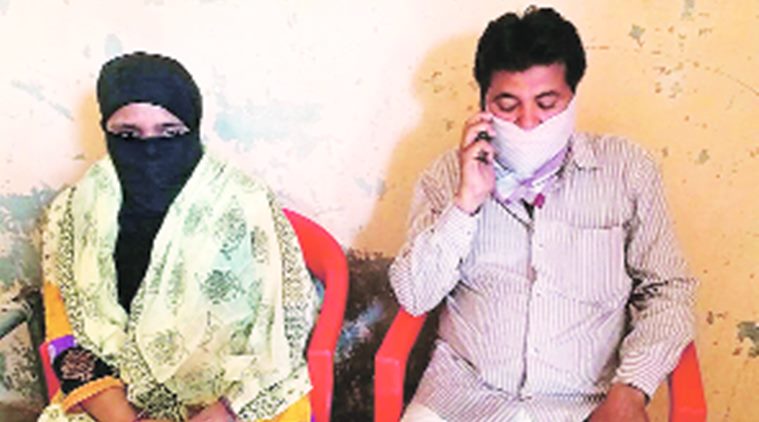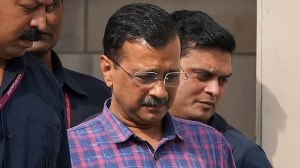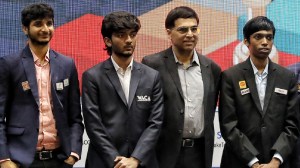- India
- International
Bilkis Bano Case: Probe not only unsatisfactory but smacked of steps to screen culprits, says Bombay HC
Bilkis Bano gangrape case: On May 4, 2017, the Bombay High Court upheld conviction of 11 men and additionally convicted five Gujarat Police personnel and two doctors for lapses in investigations
 Bilkis Bano and her husband Yakub in Dahod on Thursday
Bilkis Bano and her husband Yakub in Dahod on Thursday
On March 3, 2002, days after the burning of Sabarmati Express at Godhra station in Gujarat, Bilkis Bano, then 19 and five months pregnant, was escaping mobs of rioters with 17 other members of her family on a truck. The truck was attacked by an armed mob in Randhikpur village of Dahod district. Fourteen members of her family were killed. Bilkis was gangraped and left for dead.
On May 4, 2017, the Bombay High Court upheld conviction of 11 men and additionally convicted five Gujarat Police personnel and two doctors for lapses in investigations, and for suppressing material. The division bench of Justices V K Tahilramani and Mridula Bhatkar said: “In a case like this, we need to look through the evidence, sift the evidence minutely and carefully, as the truth lies beyond the layers of omissions and contradictions and dishonest, callous investigation.”
ON THE POLICE
The court pointed to omissions in investigation and censured the police for trying to suppress facts and shielding those who committed the crime. The court held that police personnel appeared as witnesses for the defence and tried to destroy the prosecution’s case, and that their attempts were “abortive”.
The court referred to instances such as absence of material facts in the FIR, sending Bilkis for a medical examination only on the second day, not taking her to the crime site, not taking her to identify the bodies, and not protecting the bodies. It held that these form concrete evidence to infer that the personnel at Limkheda police station prepared incorrect records to protect the interests of people within the department as well as Randikpur locals, who committed the crime.
“We find that witnesses who did not support the prosecution, and who stepped in as defence witnesses, did not create any confidence in our mind that they were telling the truth…. We found that they were interested only in presenting a manipulated version to mislead the Court,” the bench held.

The court agreed with CBI counsel Hiten Venegaonkar’s argument that the FIR filed by police was itself manipulated. “In a way is a very important document which establishes the fact that though Bilkis went to police station and urged for her complaint to be recorded, many facts were suppressed at the police station and her FIR was manipulated,” the bench observed.
“The FIR itself throws light on the falsity in recording of information narrated by her. It initiated an imaginary story of
500 persons chasing and attacking the group of Bilkis. Undoubtedly, this figure of 500 persons was deliberately mentioned to show the impossibility (of) her story, and her being able to identify the accused from a mob of 500.”
The court also pointed to the letters written by district magistrate Jayanti Ravi, directing the police to take steps to arrest the accused and several other reminders sent thereafter, which was suppressed by the police, as pointed out by the CBI.
“…The investigation was not only unsatisfactory but it smacked of dishonest steps to screen the culprits,” the HC bench said. “This itself is the most incriminating circumstance against the accused. Earlier investigation has played the role of villain in this case. That the investigation was tainted can also be seen from the evidence of one witness, Dr Mahato…(of) Limkheda Community Health Centre. He has stated that no postmortem was conducted on March 4 or 5, 2002 and there was no request from the police to conduct any postmortem.”
ON GOVERNMENT DOCTORS
The postmortem of seven bodies from the spot of crime was conducted by two doctors, Arun Kumar Prasad and Sangeeta Prasad, on March 5, 2002.
The court pointed out that one may feel the doctors are not concerned with the investigation, and are therefore innocent. But, it observed, the medical officers in this case had failed to perform the postmortem of all the bodies – as is expected under the law.
“The medical officer is required to examine private parts of the victim carefully, keeping in view history of rape, and make an objective note of the observations. It is also a must for the medical officer in the case of rape to collect vaginal swab and smear or any other liquid or dried liquid, which could have been a remnant of seminal discharge and thus give a correct direction to the investigation,” Justice Tahilramani observed. “In the inquest panchanama, the doctors have only mentioned injury to private part of one deceased. On perusal of the photographs, one can easily make out that the females were sexually abused when they were put to death. It was not one incident of rape but as per the case of prosecution, nearly three to four females were raped.”
While the incident took place on March 3, 2002, the doctors visited the spot two days later.
“We are convinced that the defence cannot be taken by the medical officers that they were directed by the police to conduct postmortem in such a manner,” the court said. “Medical officers are independent persons (and) they have to carry out postmortem independently as they are experts, and write true and correct facts in respect of injuries and the cause of death.”
The bench added: “Nowhere in any of the postmortem reports, the doctors have mentioned that white fluid flowing from private parts of the two bodies was noticed though it is mentioned in the inquest. Similarly, there is a clause in which the doctors has to state about collection of any substance found on the body and nothing was mentioned by the doctors. Thus, it is evident that they were not only casual in conducting the postmortem but suppressed the material information by way of omission.”
Apr 23: Latest News
- 01
- 02
- 03
- 04
- 05






































